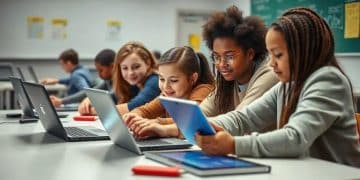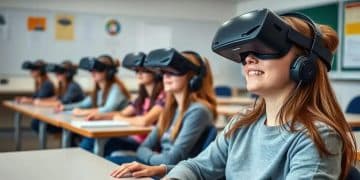Insights on hybrid learning success: strategies that work
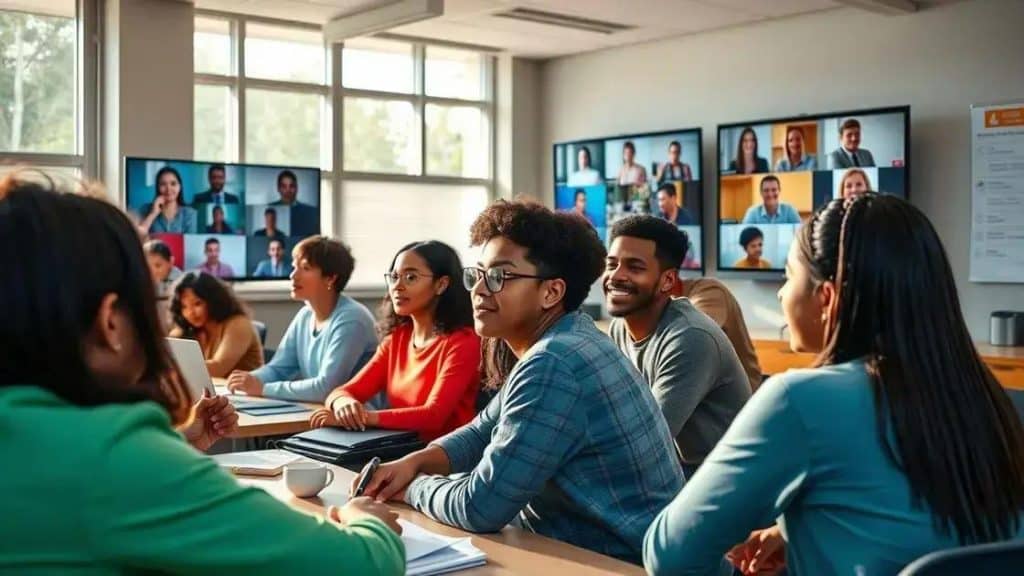
Measuring success in hybrid learning environments involves assessing student engagement, analyzing performance metrics, and collecting qualitative feedback to ensure continuous improvement and enhance educational outcomes.
Insights on hybrid learning success can truly shape the future of education. Have you ever wondered how this blend of in-person and online learning actually impacts engagement? Let’s dive into some valuable strategies that can make a real difference.
Understanding hybrid learning models
Hybrid learning models represent a blend of traditional face-to-face instruction and digital learning environments. This approach offers greater flexibility and accessibility for students. It’s important to understand how these models can effectively engage learners.
Types of Hybrid Learning Models
There are various types of hybrid learning models. Each has unique characteristics that cater to different educational goals. Some popular models include:
- Flipped Classroom: Students learn content online at their own pace, while in-class time is dedicated to discussions and hands-on activities.
- Rotation Model: Students alternate between online and in-person learning, allowing them to benefit from both formats.
- Enriched Virtual Model: Primarily online learning supplemented with periodic face-to-face sessions for assessments or collaborative projects.
Understanding these models helps educators tailor their teaching strategies. For example, the flipped classroom encourages students to engage with the material before class. This approach fosters greater interaction and deeper discussions during in-person sessions.
Another key aspect of hybrid learning is personalization. By leveraging technology, instructors can provide customized resources to meet individual student needs. This flexibility not only enhances learning experiences but also promotes student success.
Key Benefits of Understanding Hybrid Learning Models
Comprehending the different hybrid learning models can lead to several advantages:
- Increased Engagement: Students often feel more motivated when they can choose between learning formats.
- Better Accessibility: Hybrid models can accommodate various learning styles and schedules, making education more inclusive.
- Resource Optimization: Educators can use digital tools to enhance their teaching without relying solely on traditional methods.
By grasping the structure of hybrid learning models, educators can create more effective curricula. For instance, incorporating various elements from different models can lead to a richer educational experience for students.
In conclusion, understanding hybrid learning models is essential for educators aiming to improve student outcomes. These models provide a framework that supports flexible, interactive, and personalized learning opportunities.
Key benefits of hybrid learning for students
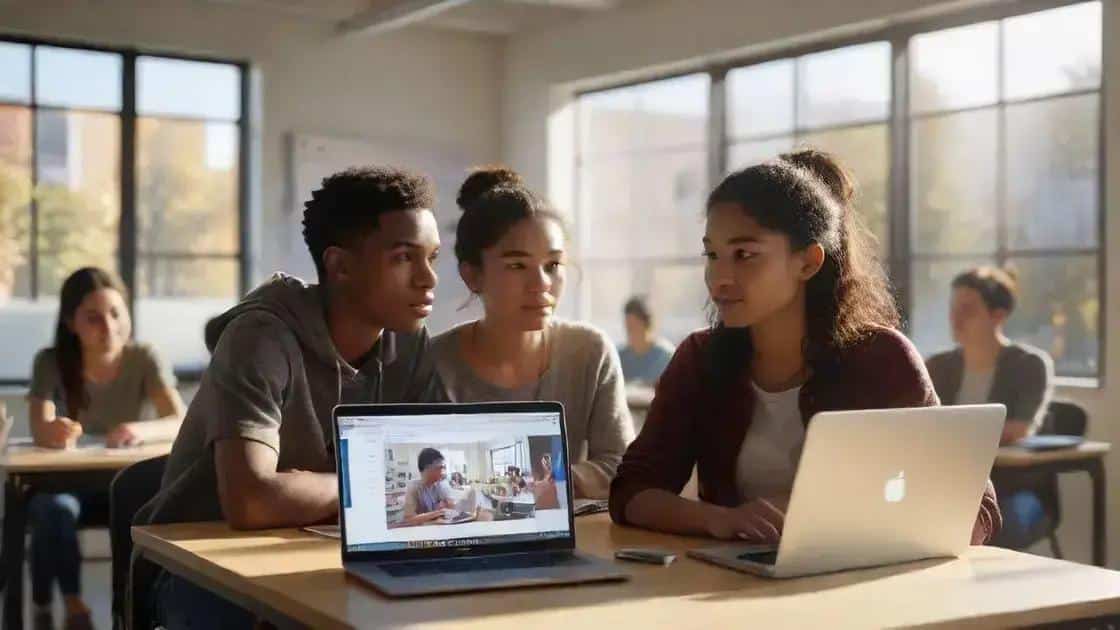
Hybrid learning offers numerous advantages for students, making it a favored educational approach. This model combines the best of traditional and online learning, providing a versatile learning environment.
Flexibility in Learning
One of the greatest benefits of hybrid learning is flexibility. Students can choose when and where to study, allowing them to balance their academic responsibilities with personal commitments. This adaptability helps to enhance their overall learning experience.
- Personalized Pace: Students learn at their convenience, enabling them to spend more time on challenging topics.
- Access to Resources: Online platforms provide a plethora of resources that can complement classroom learning.
- Varied Learning Environments: Mixing online and in-person activities keeps students more engaged and motivated.
As students navigate through different learning environments, they often develop essential skills. These include self-discipline and time management. Such skills are crucial not just for academic success but also for future careers.
Enhanced Engagement
Hybrid learning enhances student engagement by incorporating diverse teaching methods. By integrating technology into lessons, teachers can create interactive and dynamic learning experiences.
Moreover, students have opportunities for collaboration that aren’t typically available in traditional classrooms. They can engage in group discussions and projects online while benefiting from face-to-face interactions during in-person sessions.
This approach motivates students to participate actively. For instance, using multimedia tools in lessons can make learning more interesting. Engaged students are often more likely to grasp complex concepts and retain information.
Improved Access to Educators
In a hybrid learning environment, students can experience improved access to educators. With technology, students can communicate with teachers outside of regular classroom hours. This accessibility allows for more personalized educational support.
- Timely Feedback: Students can receive immediate feedback on assignments and projects.
- One-on-One Assistance: Increased opportunities for personalized help when needed.
- Open Communication: Students feel more comfortable discussing their needs and challenges.
Ultimately, understanding these benefits helps students take full advantage of their educational experiences. By embracing a hybrid learning approach, students not only enhance their academic performance but also prepare for a future where adaptability is key.
Effective strategies for successful hybrid classrooms
Creating successful hybrid classrooms requires effective strategies that leverage both in-person and online learning. By blending these approaches, educators can enhance student engagement and facilitate better learning outcomes.
Utilizing Technology
One way to ensure success in hybrid classrooms is by effectively utilizing technology. Tools like video conferencing, learning management systems, and educational apps can streamline communication and foster collaboration among students.
- Interactive Tools: Use of quizzes and polls to engage students during lessons.
- Online Discussion Boards: Create spaces for students to discuss ideas and ask questions outside of class time.
- Multimedia Resources: Incorporate videos and podcasts to cater to various learning styles.
These technological tools not only enhance learning but also create a more inclusive environment. They allow students to participate actively, regardless of their learning preferences.
Encouraging Collaboration
Collaboration is key in a hybrid classroom. Providing opportunities for students to work together fosters a sense of community, even when some are learning remotely. Group projects that combine both online and in-person collaboration can be particularly effective.
Utilizing breakout rooms in video calls or group work during in-person sessions can enhance interaction. Students often learn best when they discuss concepts with peers, making this collaboration essential for deep understanding.
Setting Clear Expectations
Another effective strategy is setting clear expectations from the beginning. Students should understand their responsibilities in both online and offline settings. This clarity promotes accountability and encourages active participation.
- Clear Guidelines: Outline what is expected in terms of participation and assignments for both formats.
- Consistent Scheduling: Maintain consistent timelines for both in-person and online components.
- Regular Check-Ins: Schedule regular meetings or feedback sessions to monitor progress and address concerns.
When students know what is expected of them, they are more likely to take ownership of their learning journey. This also helps in building trust between instructors and students.
Through these strategies, educators can create hybrid classrooms that are not only effective but also engaging and inclusive. Whether it’s through technology, collaboration, or clear expectations, the goal remains the same: to enhance the learning experience for all students.
Measuring success in hybrid learning environments
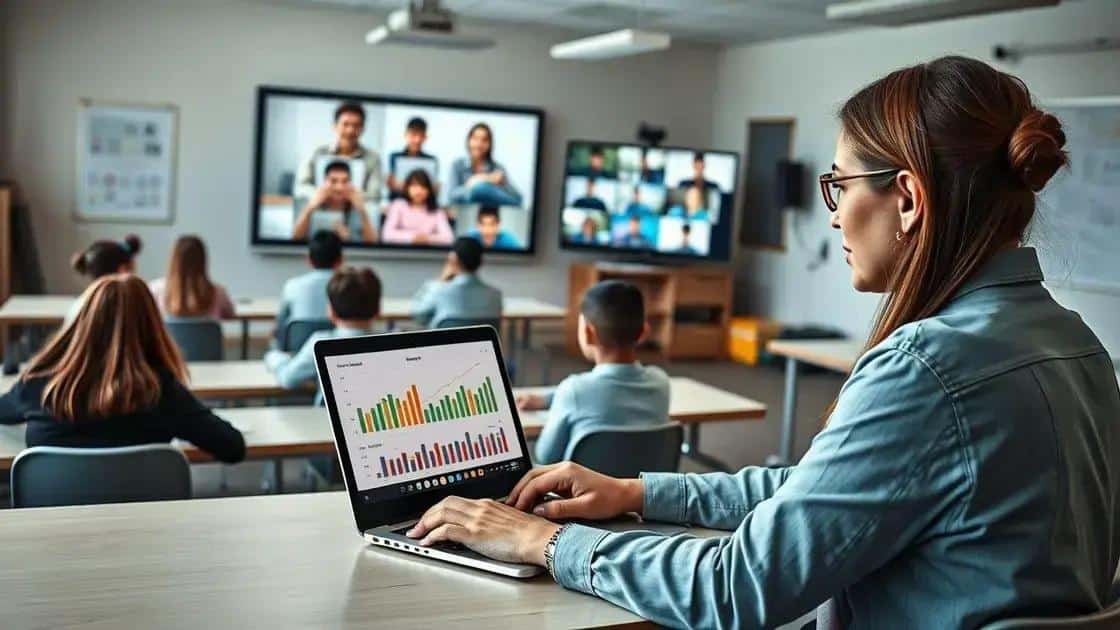
Measuring success in hybrid learning environments is crucial for educators seeking to enhance student outcomes. It’s not just about grades; there are various factors that indicate how well students are engaging and learning.
Assessment of Student Engagement
One of the key metrics for success is assessing student engagement. Engagement can be measured by how often students participate in class discussions, both online and in person. Tracking attendance in virtual sessions is also essential. Higher engagement often correlates with improved learning outcomes.
- Participation Rates: Monitor how many students contribute to discussions and activities.
- Feedback and Surveys: Regularly collect feedback from students to gauge their experiences and challenges.
- Completion Rates: Track how many students complete assignments or participate in scheduled activities.
These factors provide insight into how well students are adapting to the hybrid model and where improvements may be needed.
Performance Metrics
Another essential aspect of measuring success is monitoring performance metrics. Comparing grades and assessments before and after implementing hybrid learning can show trends in academic achievement. Analyze how different students perform in various learning environments to identify what works best for them.
Utilizing formative assessments can also help instructors fine-tune their teaching strategies. Continuous assessments allow for adjustments before final evaluations, which can enhance learning more effectively.
Qualitative Feedback
Alongside quantitative data, qualitative feedback from students can offer valuable insights. Gathering narratives about their experiences in hybrid learning helps educators understand their perspectives. This feedback may reveal whether students feel supported and whether the hybrid learning model suits their needs.
- One-on-One Interviews: Conduct interviews to explore individual experiences with hybrid learning.
- Focus Groups: Create focus groups to discuss the positives and challenges faced.
- Open-Ended Surveys: Allow students to express their thoughts freely.
This qualitative data complements numerical data, giving a fuller picture of the learning environment’s effectiveness and areas for improvement.
By combining engagement metrics, performance analyses, and qualitative feedback, educators can develop a well-rounded understanding of what success looks like in hybrid learning environments. This comprehensive approach ensures that teaching methods are continually refined to enhance student achievement.
FAQ – Frequently Asked Questions about Measuring Success in Hybrid Learning Environments
What are the main metrics to measure student engagement in hybrid learning?
Key metrics include participation rates, attendance in virtual sessions, and completion rates of assignments.
How can performance metrics be analyzed effectively?
Performance metrics can be analyzed by comparing grades and assessments before and after implementing hybrid learning.
Why is qualitative feedback important in hybrid classrooms?
Qualitative feedback provides insights into students’ experiences, helping educators understand their perspectives and improve the learning environment.
What role does continuous assessment play in hybrid learning success?
Continuous assessment allows instructors to make timely adjustments to their teaching strategies, enhancing the overall learning experience for students.
